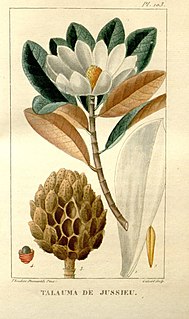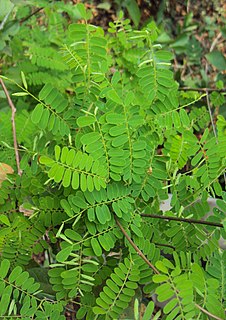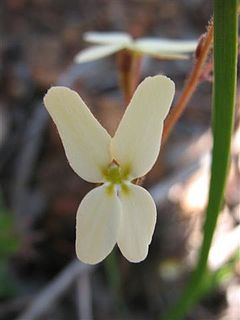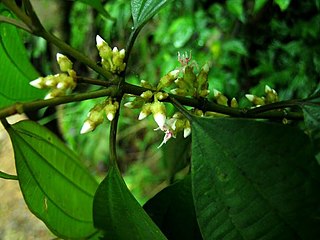
The Integrated Taxonomic Information System (ITIS) is an American partnership of federal agencies designed to provide consistent and reliable information on the taxonomy of biological species. ITIS was originally formed in 1996 as an interagency group within the US federal government, involving several US federal agencies, and has now become an international body, with Canadian and Mexican government agencies participating. The database draws from a large community of taxonomic experts. Primary content staff are housed at the Smithsonian National Museum of Natural History and IT services are provided by a US Geological Survey facility in Denver. The primary focus of ITIS is North American species, but many biological groups exist worldwide and ITIS collaborates with other agencies to increase its global coverage.

Leucojum is a small genus of bulbous plants native to Eurasia belonging to the Amaryllis family, subfamily Amaryllidoideae. As currently circumscribed, the genus includes only two known species, most former species having been moved into the genus Acis. Both genera are known as snowflakes.

Daphniphyllum is the sole genus in the flowering plant family Daphniphyllaceae and was described as a genus in 1826. The genus includes evergreen shrubs and trees mainly native to east and southeast Asia, but also found in the Indian Subcontinent and New Guinea.

The Catalogue of Life is an online database that provides the world's most comprehensive and authoritative index of known species of animals, plants, fungi and micro-organisms. It was created in 2001 as a partnership between the global Species 2000 and the American Integrated Taxonomic Information System. The Catalogue interface is available in twelve languages and is used by research scientists, citizen scientists, educators, and policy makers. The Catalogue is also used by the Biodiversity Heritage Library, the Barcode of Life Data System, Encyclopedia of Life, and the Global Biodiversity Information Facility. The Catalogue currently compiles data from 168 peer-reviewed taxonomic databases, that are maintained by specialist institutions around the world. As of 2019, the Catalogue lists 1,837,565 of the world's 2.2m extant species known to taxonomists on the planet at present time.

Linnaea is a plant genus in the family Caprifoliaceae. Until 2013, the genus included a single species, Linnaea borealis. In 2013, on the basis of molecular phylogenetic evidence, the genus was expanded to include species formerly placed in Abelia, Diabelia, Dipelta, Kolkwitzia and Vesalea. However, this is rejected by the majority of subsequent scientific literature and flora.

Dicoma is a genus of flowering plants in the sunflower family, native to Africa and the Middle East.

Bambusa tulda, or Indian timber bamboo, is considered to be one of the most useful of bamboo species. It is native to the Indian subcontinent, Indochina, Tibet, and Yunnan, and naturalized in Iraq, Puerto Rico, and parts of South America.

Cinnamomum iners is a tree species in the family Lauraceae described by Reinwardt and Blume. No subspecies are listed in the Catalogue of Life. It occurs naturally in Sri Lanka, India, Bangladesh, Myanmar, Thailand, Laos, Cambodia, Vietnam, Malaysia, Indonesia, the Philippines and southern China and south-eastern Tibet.
Trichoceros is a genus of flowering plants from the orchid family, Orchidaceae. The genus is endemic to South America.

Tiger & Bunny is a 2011 Japanese anime television series produced by Sunrise under the direction of Keiichi Satou. The screenplay was written by Masafumi Nishida, with original character design by Masakazu Katsura. The series began its broadcast run in Japan on April 3, 2011 on Tokyo MX, followed by rebroadcasts on BS11 and MBS, and ended on September 17, 2011. Viz Media simulcast the series on Hulu and Anime News Network. It is set in a futuristic city where heroes fight crime whilst promoting real life sponsors, focusing on two superheroes, the old-fashioned Kotetsu T. "Wild Tiger" Kaburagi and the rookie hero Barnaby "Bunny" Brooks Jr., as they are forced by their employers to work together.
Artocarpus rigidus is a tree species in the Moraceae that was described by Blume. A. rigidus is a wild species of the breadfruit/jackfruit genus (Artocarpus) and may be referred to as the 'monkey jack(fruit)'; its Vietnamese name is mít nài.
Phyllanthus polyspermus is a bush species first described Jean Louis Marie Poiret, with its current name after Schumacher and Thonning; it is included in the family Phyllanthaceae. No subspecies are listed in the Catalogue of Life.

Phyllanthus reticulatus is a plant species described Jean Louis Marie Poiret; it is included in the family Phyllanthaceae.

Adenia subsessilifolia is a species of flowering plant in the passionflower family, Passifloraceae, described by Joseph Marie Henry Alfred Perrier de la Bâthie. Adenia subsessilifolia is endemic to southern Madagascar. No subspecies are listed in the Catalogue of Life.

Magnolia dodecapetala is a species of plant in the genus Magnolia, family Magnoliaceae. It was described by a French naturalist named Lamarck, and it obtained the name from a Belgian botanist named Rafaël Herman Anna Govaerts.

Dalbergia horrida is a species of thorny liana, with the Vietnamese name trắc nhiều hoa which is in the subfamily Faboideae and tribe Dalbergieae.

Stylidium piliferum is a species of dicotyledonous plant from the genus Stylidium. It is found in Western Australia.

Silene sorensenis, the three-flowered campion or Sorensen's catchfly, is a species of plant in the family Caryophyllaceae. It is found in the tundra of the Canadian Arctic Archipelago, the Northern Russian Far East and Greenland.

Blastus is a genus of plants in the family Melastomataceae. Species can be found in: Japan, China, Indo-China and west Malesia.
Asperula dasyantha is a species of flowering plant in the family Rubiaceae. It is endemic to Georgia, Azerbaijain, and Armenia.















